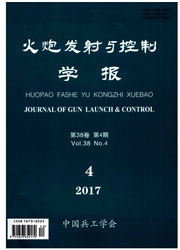

 中文摘要:
中文摘要:
在轴承故障诊断中,故障信号的提取是一个关键问题。实际测得的轴承振动信号一般是非平稳和非高斯分布的信号,信噪比很低,微弱的故障信息往往完全淹没在噪声中,信号特征的提取非常困难。信号的高阶累积量对加性高斯噪声和对称非高斯噪声不敏感,应用在轴承的故障诊断中,可以有效地分离信号与噪声,提高信噪比,增强故障信息。对轴承在不同状态下的振动信号进行对比分析,提取了不同状态下轴承振动信号的功率谱与高阶累量谱(双谱),建立了用于故障诊断的双谱特征向量,并利用BP神经网络进行了故障诊断。分析结果表明,从高阶累积量提取的特征与功率谱相比,对故障特征比较敏感,容易实现智能诊断中的数字特征提取,可有效地区分轴承的故障。
 英文摘要:
英文摘要:
In the fault diagnosis of bearing, the extracting of fault signal is a key problem. The practical testing vibration signal of bearings is unsteady or non-Gauss distribution. It has low signal-to-noise. Usually the faint fault information is entirely in the noise, the characteristic extracting is very difficult. Higher-order cumulant spectrum is not sensitive to the adding Gauss noise and symmetry non-Gauss noise. It can separate signal and noise effectively by utilizing higher-order cumulant spectrum for fault di- agnosis of bearing. Also it can improve signal-to-noise and enhance fault information. The vibration signal of bearings in different states is contrasted and analyzed, synchronously the higher-order cumulant spectrum (bispectrum) of bearing vibration signal in different states is picked up. The analysis result is shown that the characteristic extracting from the higher-order cumulant spectrum is more sensitive to the fault of bearing than the characteristic from power spectrum. It can separate faults of bearing effectively, and carry out intelligent fault diagnosis.
 同期刊论文项目
同期刊论文项目
 同项目期刊论文
同项目期刊论文
 期刊信息
期刊信息
